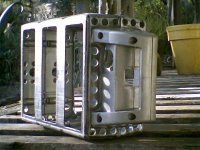doubledipsoon
100 W
- Joined
- Feb 22, 2013
- Messages
- 151
ElectricRider described their BMSs as a "Smart high current LiMnO2 24v 7s SOA". This is the first Lithium battery I've ever owned and I don't know much about them other than generic info like protecting the battery from heat, overcharge, undercharge etc.....I contacted ElectricRider to find out if this particular battery is supposed to be fully discharged around 23.6 volts. Since the battery is has a 20 Amp-Hour capacity, my 54 minute ride drawing 20 amps comes out to about that. (18 miles @ 3minutes/mile @drawing 20 amps continuous= about 20AH, right?) So, I'm asumming that when it cut out at 23.6v, the battery was theoretically discharged....I mean, are 24v LiMnO2 batteries "empty" at 23.6 volts?


